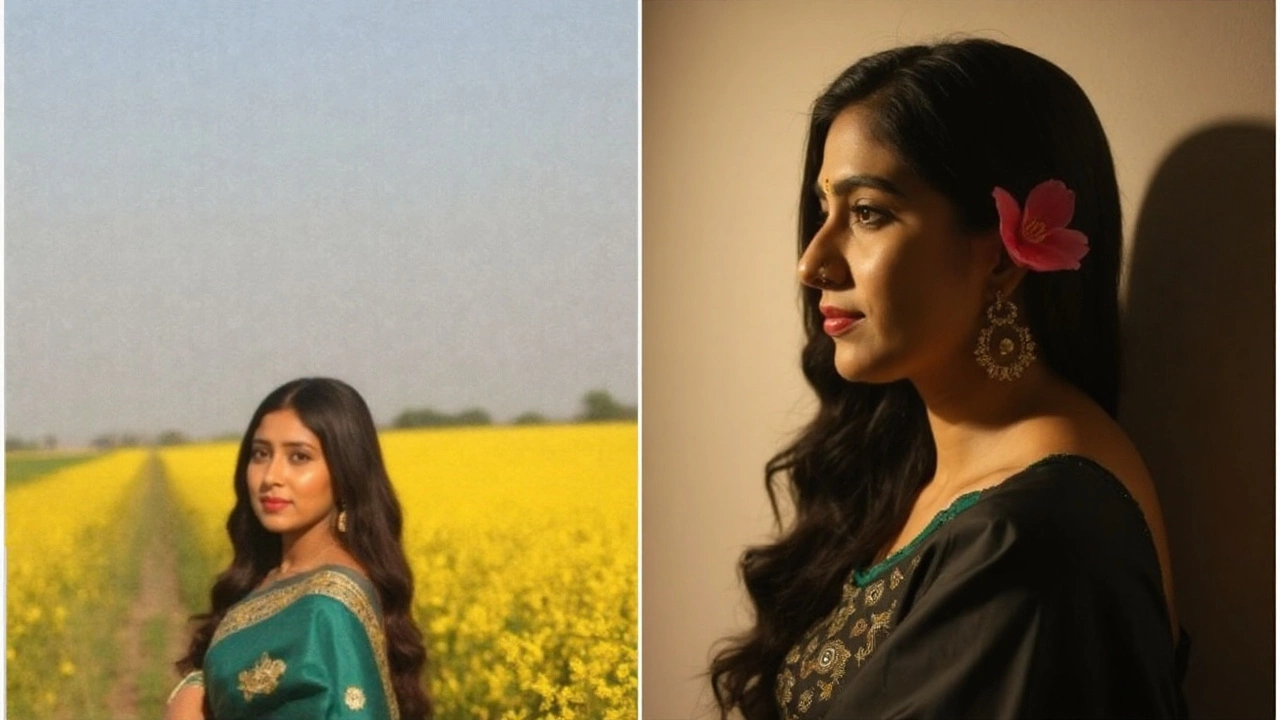Gemini’s image engine is powerful—if you give it something to work with
AI images rarely fail because the model is weak. They fail because the prompt is thin. Google’s Gemini app, running on the Imagen 3 model and backed by the Nano Banana editor, can deliver crisp photorealism, painterly styles, and complex scenes—when you feed it precise instructions. Short prompts can work, but detailed, directed prompts work far more often, especially for portraits, product mockups, and cinematic, multi-element scenes.
What the model does well: realistic faces and materials, natural light, and balanced compositions. It’s also comfortable switching styles—charcoal, watercolor, inked comic panels, vintage film looks—if you call the style clearly. The companion editor lets you tweak what you generated, upload your own images for targeted changes, or blend multiple images into a new composite. That’s useful for brand content, social campaigns, slides, or personal projects where you need a consistent look.
Think of it as a two-step workflow. First, direct the scene with a strong prompt. Second, refine with edits—replace a sky, change a color palette, move a subject, punch up the contrast, or apply an era-specific grade. The more you state upfront—subject, action, setting, light, style, lens—the less cleanup you need later.
One more thing: like other mainstream AI tools, you’ll hit guardrails. Some requests will be blocked (for safety or copyright reasons). When that happens, reframe your ask—change the subject, remove brand names, or steer away from sensitive content.

The prompting and editing playbook that gets results
Start your prompt with a verb. “Generate,” “create,” “render,” or “draw” puts the model in the right mode. Then build the scene with five blocks: subject, action, environment, light, and style. Add camera language (lens, shot type, depth of field) if you want a photo look. If you’re chasing a past era, name the decade, film stock vibe, or design movement. If you need a mood, point to concrete cues—soft overcast light for calm, hard sidelight for tension, warm tungsten for cozy.
- Subject: who or what is in the frame (age, clothing, materials, brand-neutral details)
- Action: what the subject is doing (pose, gesture, expression)
- Environment: where it happens (setting, weather, background elements)
- Light: time of day, quality, direction, color temperature
- Style: photoreal, watercolor, charcoal, cel-shaded, retro print, etc.
- Camera (optional): 35mm lens, medium wide shot, shallow depth of field, macro
It pays to say what to avoid, too—"no text overlay," "no logos," "clean background"—especially for product shots. You’re not being picky. You’re reducing guesswork.
The yoga test shows how clarity steers results: “Create an image of a yoga instructor outdoors, wearing a white top and green bottoms, standing at the edge of a rocky cliff. The instructor is in a crescent lunge pose. The sun is setting over a calm ocean. Medium wide shot on a 35mm lens, warm golden-hour light, photoreal.” That prompt works because it nails subject, wardrobe, pose, location, time of day, shot type, lens, and style. There’s no ambiguity about framing or color.
Here are more prompts you can copy and adapt:
- Product hero (clean e‑commerce): “Render a matte black stainless-steel water bottle on a seamless light gray background. Soft studio lighting with a single key light and gentle rim light. No logos, no text, no props. Photoreal, high contrast, crisp reflections.”
- Food poster (appetite appeal): “Create a close-up of crispy buffalo wings glazed with sauce, steam rising, on a rustic wooden board with a small ramekin of ranch. Overhead softbox lighting, shallow depth of field, warm tones, photoreal.”
- Vintage travel print: “Generate a 1960s-style travel poster of Santorini, Greece. Bold flat colors, grainy screenprint texture, minimalist shapes, large sky, tiny sailboat on the horizon. No text, poster-style composition.”
- Concept car in studio: “Photograph a modern electric concept coupe in a white cyclorama studio. Three-quarter front view, polarized soft lighting, subtle reflections, 50mm lens, photoreal. Clean floor, no background objects.”
- Editorial portrait: “Create a portrait of a software engineer in a sunlit office. Natural window light, soft shadows, candid smile, shallow depth of field, 85mm lens look, photoreal.”
Gemini can also produce the copy and the image in one go. Try: “Write a short social post promoting a weekend buffalo wing festival and generate a mouthwatering image to go with it. Keep the message playful and under 40 words.” You’ll get text to paste, plus a visual ready for your event page.
Once the image lands, move to edits. The Nano Banana editor supports practical tasks: retouch a blemish, recolor a shirt, swap a background, expand a canvas, or blend two uploads into one composite. If your first render is close but not perfect, ask for variations (“more dramatic sky,” “darker wood table,” “closer crop on the face”). If a detail is wrong—say the pose or the material—be explicit: “Change to herringbone wool,” “turn the hand inward,” “make the smoke subtle and wispy.” Specific fixes beat general notes.
Retro looks need more than a label like “vintage.” Anchor them in a time and medium. Try “early 1970s Kodachrome vibe, slight film grain, warm color cast” for family nostalgia, or “mid-century modern poster, duotone inks, halftone dots” for print-era flavor. For 1990s camcorder energy, ask for “4:3 aspect, interlaced lines feel, cool fluorescent cast, onboard mic look.” Mood flows from concrete cues.
If you’re chasing pro-level realism, borrow photographer language. Lens choice sets perspective. A 35mm medium-wide includes more environment and slight edge distortion; an 85mm compresses features for flattering portraits. Depth of field tells the eye where to look—"shallow DoF, bokeh background" spotlights the subject. Directional cues like “north-facing window,” “hard sidelight,” or “soft top light” shape the scene fast.
For composites, keep lighting consistent across sources. If you upload a product shot lit from the left and a background lit from the right, ask the editor to match the direction: “Relight background to match left-to-right key light.” Then set shadows: “Add soft contact shadow under the bottle, consistent with a light from upper left.” Those two steps sell the composite.
Hands, text, and tiny details can still get weird. If a hand matters, specify position and count: “right hand resting on table, five fingers visible, natural pose.” If you need readable text in-frame, know it’s hit-or-miss—better to add real type in your design tool after you export. For jewelry, zippers, stitching, or circuit traces, ask for “macro detail” and “sharp specular highlights.”
Here’s a quick, repeatable workflow you can use on any brief:
- Frame the intent in one line: the why and where the image will live (website hero, LinkedIn post, slide title).
- Draft the scene blocks: subject, action, environment, light, style, camera. Write them as a single sentence.
- Generate 3–4 options. Don’t settle on the first; explore the edges (brighter, darker, closer, wider).
- Pick a direction, then fix the specifics via edits: pose, palette, props, background.
- Export at full size. Keep a clean master and a cropped version for your target platform.
Best practices that save time:
- Aim for 50–120 words in your prompt for complex scenes; shorter is fine for simple product or texture shots.
- Name the surface qualities (matte, glossy, brushed metal, velvet) to control reflections.
- Use color language with intent: “muted earth tones,” “contrasty teal-and-orange,” “cool, clinical whites.”
- Put the most important element first so the model doesn’t bury it in the background.
- State what to exclude: “no text, no watermark, clean background, no logos.”
- Ask for the composition you want: “centered,” “rule of thirds,” “symmetrical top-down.”
Editing tips inside the app:
- Upload-and-match: Bring in a reference image and ask, “Match this color palette and lighting.” It’s a quick way to hit brand tone.
- Targeted replacements: “Replace the sky with soft stratocumulus,” “swap the background for a minimalist concrete wall,” “change the jacket to deep navy.”
- Style shifts: “Restyle as watercolor on cold-press paper,” “convert to charcoal sketch with visible strokes,” “apply 1980s VHS home-video look.”
- Blends: Upload two images and direct the mix: “Blend the city skyline into the coffee’s steam, subtle, dreamy.”
When you’re done, use the image toolbar’s download option to save the full-size file and share it across your slides, site, or socials. If you plan to crop for different platforms, frame the subject with some breathing room and export variants for square, portrait, and landscape. That avoids cutting off hands, heads, or labels when you post.
A quick note on rights and safety: use your own uploads or assets you’re allowed to modify, avoid brand marks you don’t own, and steer clear of requests involving private individuals. If a request is blocked, it’s usually because it trips a policy rule. Adjust the prompt and try again.
Finally, don’t forget the low-effort win: ask Gemini to draft the copy and the image together so the tone matches. “Write a product announcement for a stainless tumbler in a relaxed voice, then generate a photoreal studio image of the tumbler with soft reflections, no text.” You’ll get a cohesive pair—clean copy and a visual built for it—ready to drop into your deck or landing page.
